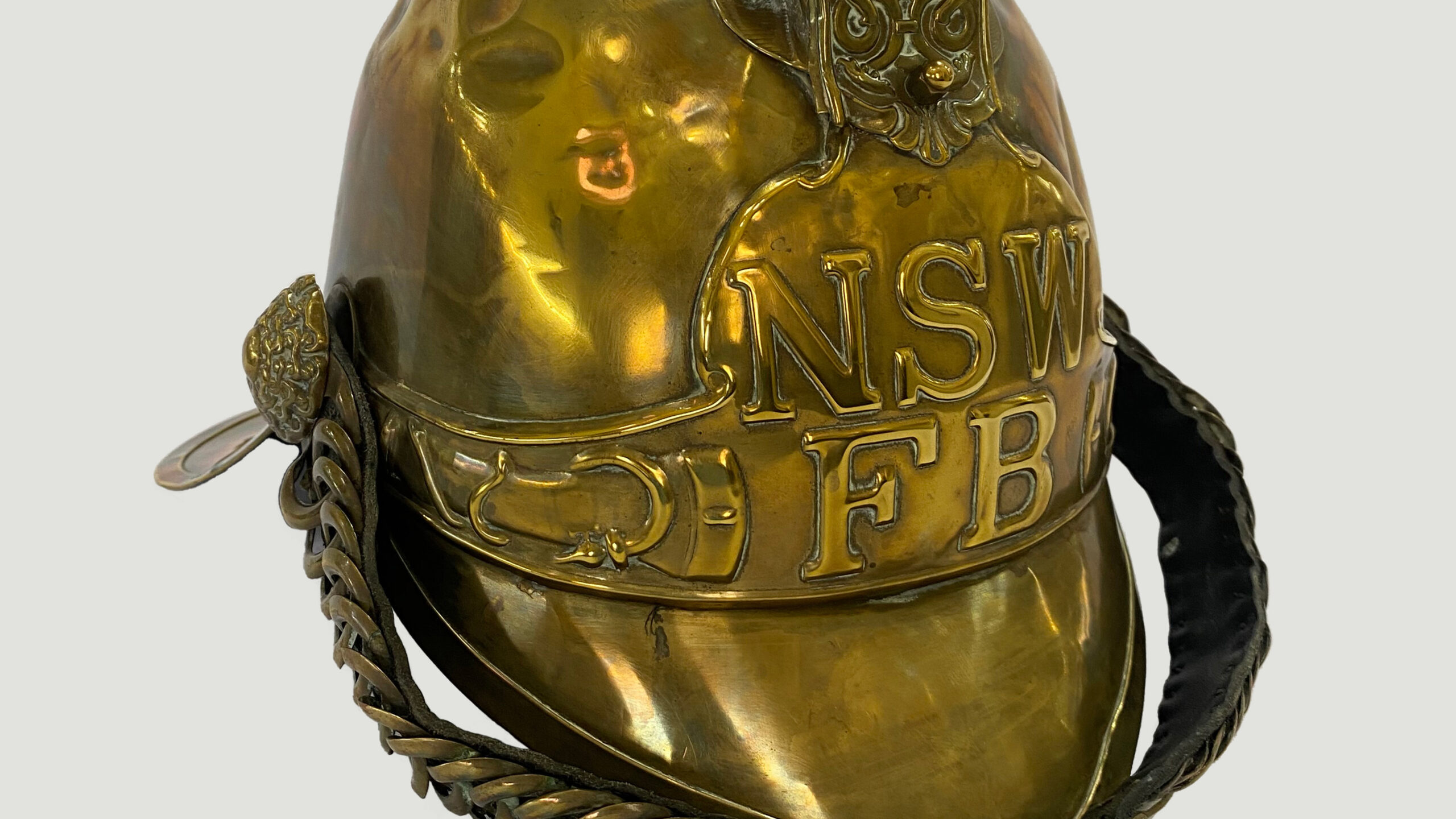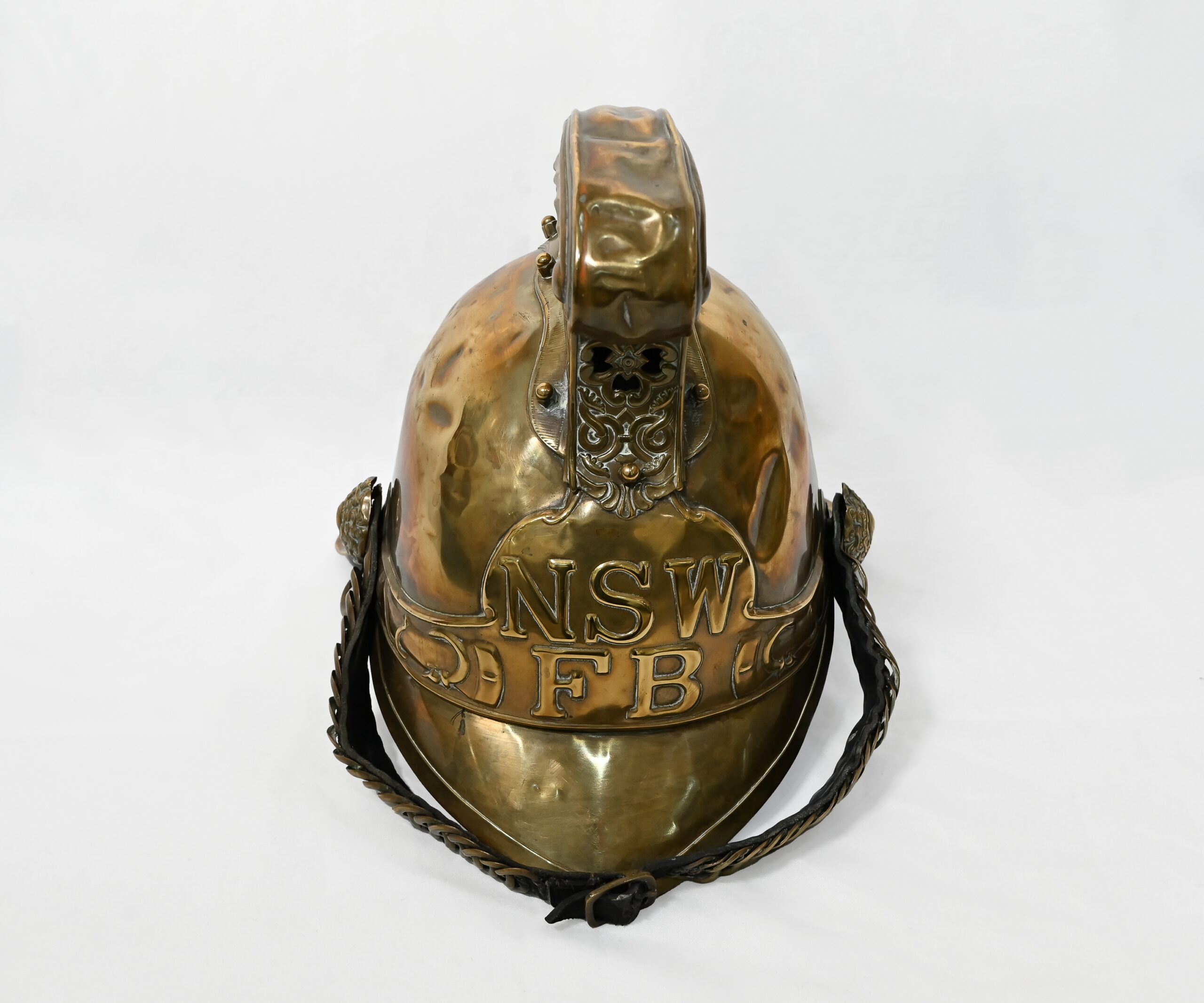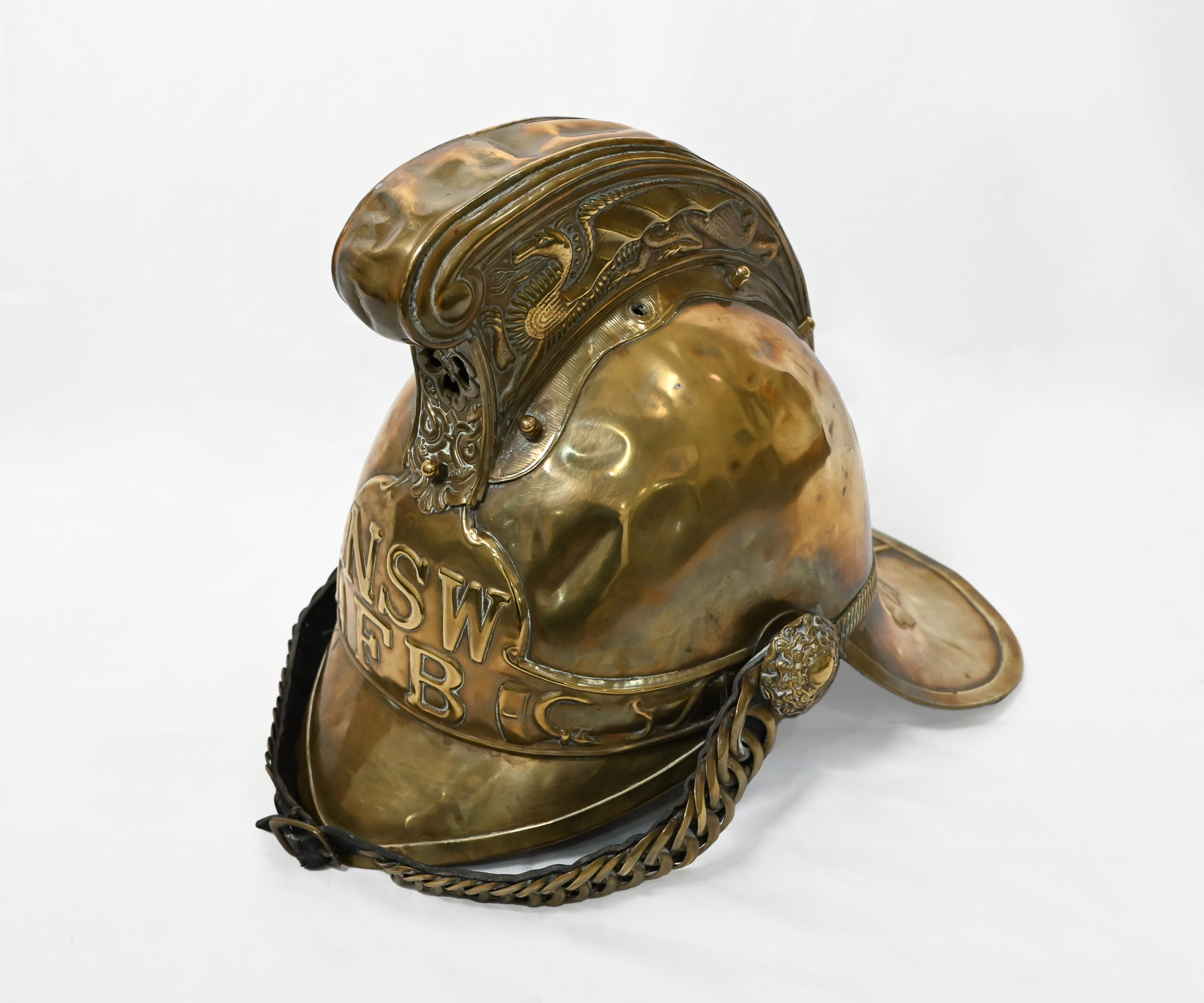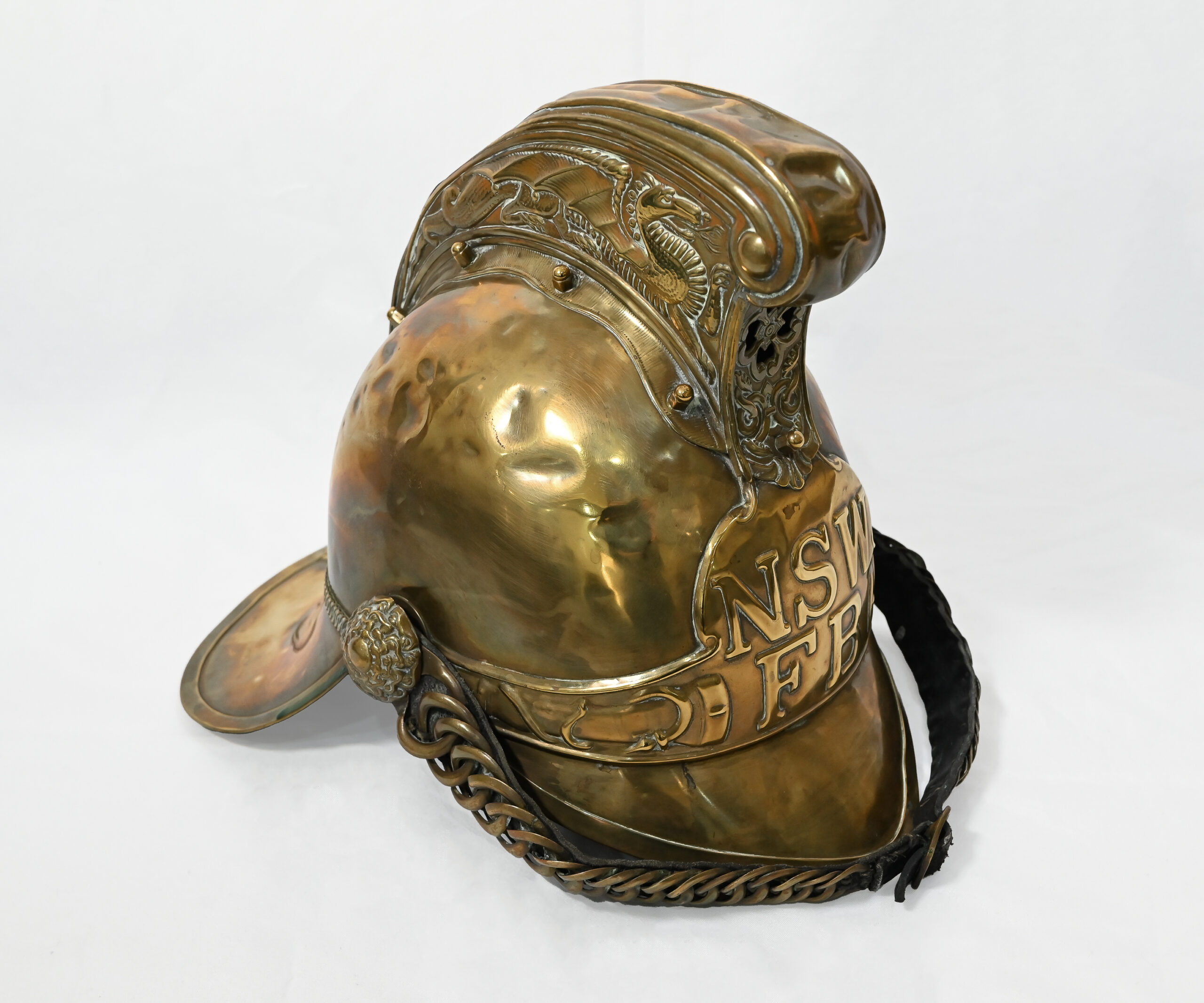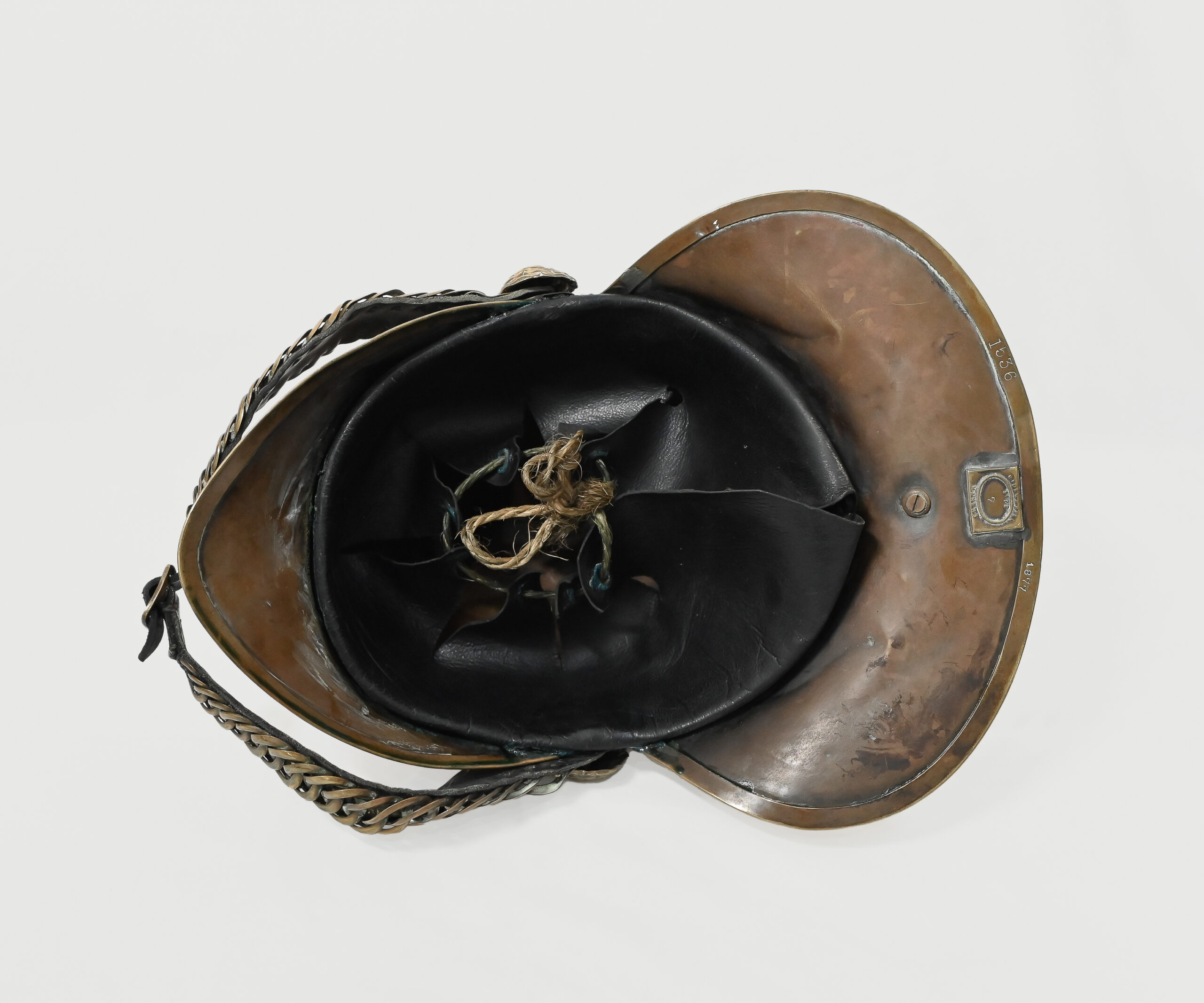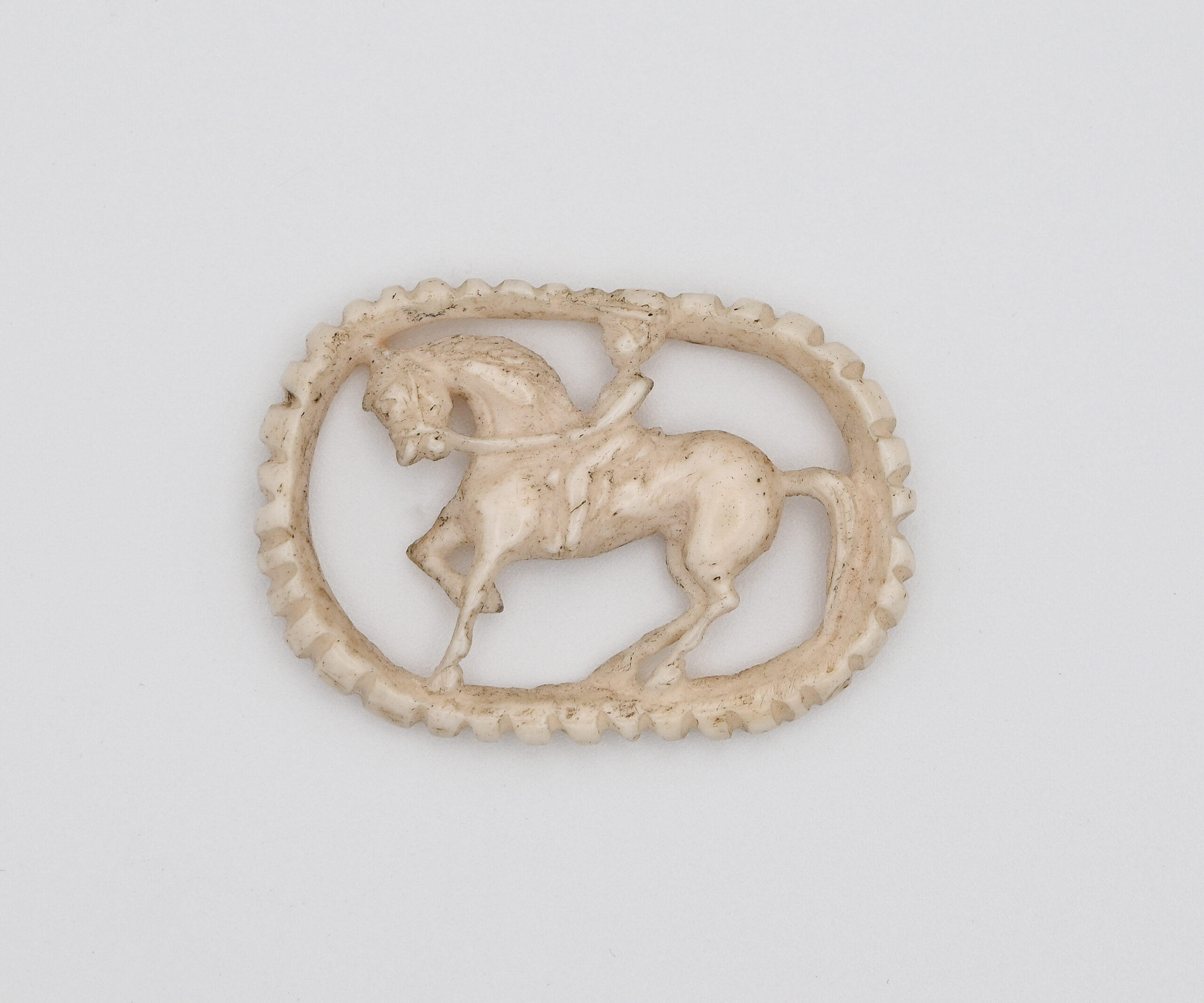Keeping a Cool Head
The Evolution of the Fireman’s Helmet
When the shingled roof of the kitchen at Bathurst hospital caught fire in 1878 and destroyed the whole building, the town lamented the fact that it ‘did not posses an efficient trained band ready for duty by day and night.’
At a time when buildings were heated by coal and lit by gas and candles, fires were an ever present threat. Even so, metropolitan fire brigades weren’t established in New South Wales until 1884. Before then, fire brigades were operated by local volunteers or by insurance companies, who raced their engines, equipment and firefighters to the buildings they insured.
When Bathurst got its professional fire brigade in 1885, its firefighters would have worn this style of brass Merryweather helmet. It is stamped with the initials of the NSW Fire Brigade, but its design reaches back to the crested military helmets of Ancient Greece and Rome.
Those helmets were the inspiration for the dragoon helmets worn by the Napoleonic army in 1803, which had removable feather plumes. Feathers are a liability in highly flammable conditions, so when French firefighters adopted the dragoon helmet in the 1860s they made the plume into a brass comb that could also protect their heads from falling beams and objects. The peaked visor offered protection without reducing visibility, and a skirt at the back protected the neck from falling embers.
Captain Eyre Massey Shaw, Chief Officer of the London Metropolitan Fire Brigade, was so impressed by their military style and the protection they offered that he introduced them to Britain in 1868, replacing the black leather hats previously worn. They were subsequently used by the various colonial brigades in Australia, and remained in use until heat resistant polycarbonate helmets were adopted in the 1960s.


